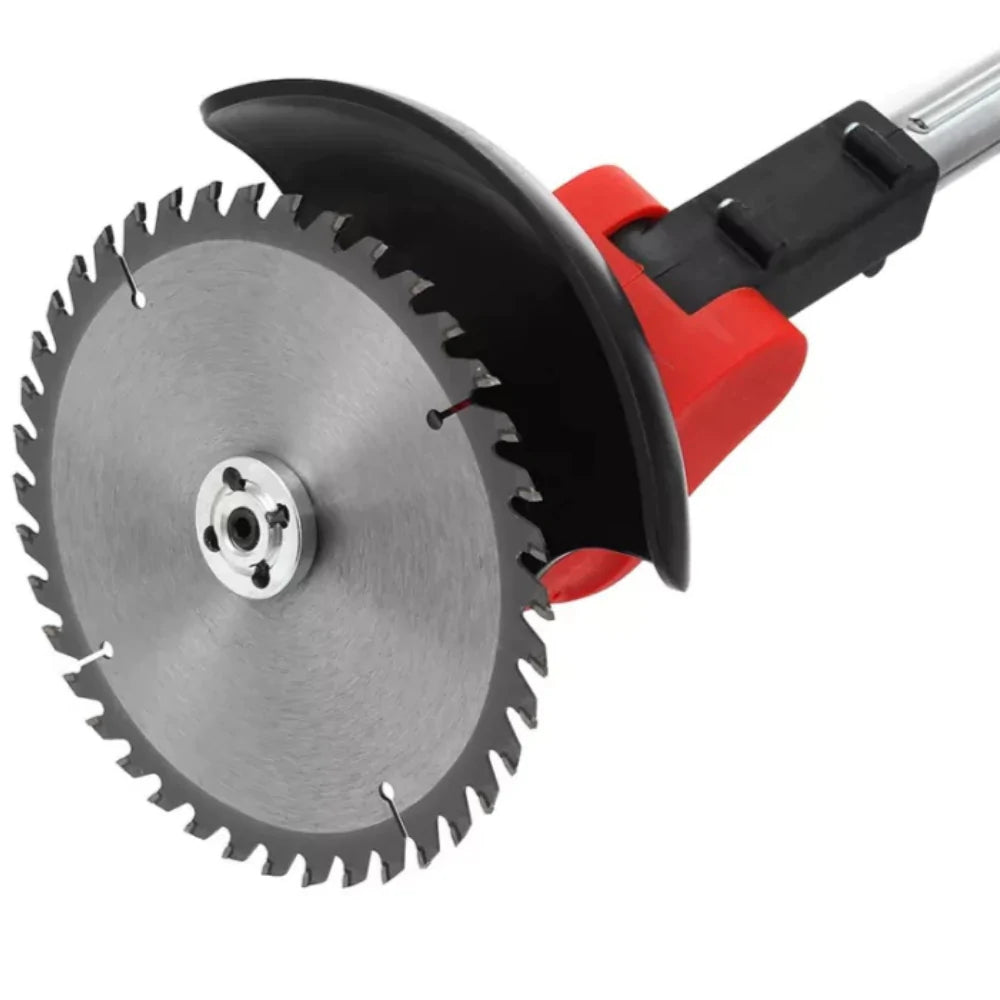Whether you're a gardening enthusiast or a landscaping professional, selecting the right tools for your tasks can be a daunting challenge.Brush cutters are versatile tools commonly used for lawn cutting and trimming weeds and shrubs. With the wide array of options available in the market today, making the right choice can be overwhelming. This guide aims to help you navigate the selection process and choose the ideal weed cutter for your specific needs..
Types of Brush Cutters
Brush cutters come in various forms, each tailored to different applications:
- Handheld Brush Cutters: These tools operate similarly to string trimmers but feature more powerful engines, making them suitable for tackling thick grass, overgrown weeds, and dense bushes. Handheld brush cutters are available with both 2-cycle and 4-cycle engines.
- Walk-Behind Brush Cutters: Also known as brush mowers, walk-behind brush cutters are ideal for handling large areas with overgrown vegetation. If you're looking to maintain areas that don't require frequent attention, these machines are a great choice for effective cutting and trimming.
- Tow-Behind Brush Cutters: When dealing with extensive fields or larger properties, tow-behind brush cutters are the solution. These cutters can be attached to garden tractors or ATVs, providing the power and capacity needed to tackle thicker bushes and weeds effectively.
Brush Cutter Accessories and Attachments
To ensure your brush cutter is optimized for your specific needs, consider the type of vegetation you'll be dealing with and select the appropriate accessories and attachments:
- Blades for Grass and Weeds: For cutting grass and light weeds, choose blades with 8 or fewer teeth. These are ideal for maintaining lawns and more delicate vegetation.
- Blades for Thick Weeds and Shrubs: When dealing with thicker weeds and shrubs, opt for blades with 9 to 40 teeth. These blades provide the extra cutting power needed to tackle tougher vegetation.
- Blades for Small Trees and Saplings: For cutting small trees and saplings, select brush cutting blades with more than 40 teeth. These blades are designed to handle more substantial growth.
- Brush Knives or Triblades: If you're dealing with reeds and dense shrubs, consider using brush knives or triblades designed for these specific types of vegetation.
By matching the right brush cutter type, accessories, and attachments to your intended tasks, you can maximize efficiency and achieve the best results in your gardening and landscaping projects.
Where to Buy
To purchase various types of brush cutters and essential accessories, consider shopping from reputable suppliers or retailers who specialize in outdoor power equipment. They can provide you with a wide range of options and guidance to ensure you make the right choice for your specific needs.
In conclusion, selecting the right weed cutter involves assessing your requirements, understanding the type of vegetation you'll be dealing with, and choosing the appropriate brush cutter type and accessories. By following these guidelines, you can make an informed decision and efficiently tackle your landscaping tasks. Happy cutting!
Additional Considerations for Choosing a Weed Cutter
Beyond the type of weed cutter and accessories, there are some additional factors to consider when making your choice:
- Engine Power: Depending on the density and toughness of the vegetation you plan to cut, you may need a brush cutter with more horsepower. A more powerful engine will make cutting through thick weeds and brush easier.
- Fuel Type: Brush cutters can run on either gasoline (petrol) or electricity. Gasoline-powered models offer more mobility but require regular refueling and maintenance. Electric models are quieter and produce no emissions but are limited by the length of the power cord or battery life.
- Weight and Comfort: Consider the weight of the brush cutter, especially if you'll be using it for extended periods. Lightweight models are easier to maneuver but may have less power. Look for features like padded harnesses and adjustable handles for added comfort during use.
- Brand and Warranty: Choose a reputable brand known for producing reliable outdoor power equipment. Check for warranties and customer reviews to ensure the quality and durability of the product.
- Budget: Set a budget based on your needs and the features you require. While it's essential to invest in a quality weed cutter, there are options available for various price ranges.
- Safety Features: Look for safety features such as blade guards and kill switches. These features can help prevent accidents during operation.
- Maintenance: Consider the ease of maintenance. Some models may require more frequent servicing than others. Check if replacement parts are readily available.
- Noise Level: If noise is a concern, opt for quieter models, especially if you live in a residential area with noise restrictions.
- Terrain: Evaluate the terrain of your property. Rough or uneven terrain may require a brush cutter with larger, more rugged wheels for stability.
- Storage: Ensure you have adequate storage space for your chosen weed cutter, especially if you opt for larger walk-behind or tow-behind models.
In summary, selecting the right weed cutter involves a combination of factors, including the type of vegetation you'll be cutting, your budget, personal comfort, and environmental considerations. By carefully assessing your needs and considering these additional factors, you can make an informed decision and choose a weed cutter that will serve you effectively in your gardening and landscaping endeavors.
Test and Consultation
Before making your final purchase, it's advisable to test the weed cutter if possible. This hands-on experience will help you assess its comfort, maneuverability, and ease of use. Additionally, don't hesitate to consult with experts at your local garden supply store or landscaping professionals. They can provide valuable insights and recommendations based on their experience and knowledge of local vegetation and terrain.
Environmental Impact
Consider the environmental impact of your choice. If you're environmentally conscious, you may prefer electric weed cutters or those with advanced emission-reducing technology in their gasoline engines. Choosing eco-friendly options can contribute to a healthier and more sustainable landscape.
Local Regulations
Be aware of any local regulations or noise restrictions that may apply to the use of weed cutters in your area. Some neighborhoods have specific rules regarding operating hours and noise levels for outdoor power equipment. Ensure that your choice of weed cutter complies with these regulations.
Maintenance and Spare Parts Availability
Weed cutters, like all outdoor power equipment, require regular maintenance. Check the availability of spare parts and servicing centers in your area. A readily available supply of spare parts and professional servicing can extend the lifespan of your weed cutter.
User Reviews
Read user reviews and testimonials about the specific weed cutter models you are considering. Real-world experiences and feedback from other users can provide valuable insights into the reliability and performance of the equipment.
Long-Term Investment
Consider your purchase as a long-term investment. A well-chosen weed cutter can serve you for many years, making your landscaping and gardening tasks more manageable and efficient. Prioritize quality and durability when making your decision.









